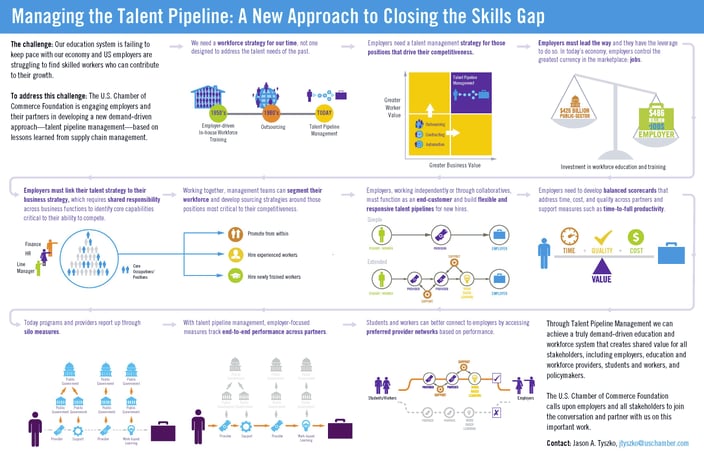As posted on FosterEDU blog
The skills gap continues to dominate much of today’s economy discussions. Despite steady improvements in college graduation rates and job availabIlity, employers and job seekers struggle to make a match. It’s time for employers to gain control of talent management. The U.S. Chamber of Commerce proposes a new approach to recruiting, hiring and retention: Apply lessons from supply chain management to establish partnerships with education and workforce providers to hire, train and retain skilled employees.
The “Talent Pipeline Management” campaign calls for employers to start their hiring process with the end in mind. By putting themselves in the role of the end-customer, employers can regain control of their talent search with demand-based recruiting, which focuses on long-term skills development. Employers decide the measures from which to track end-to-end performance across partners (in this case, the partners are the talent providers such as academic institutions or workforce training organizations chosen to provide the business with talent growth) which ultimately results in a better prepared workforce and a happier employees.
Be the End-Customer
The challenges many hiring managers are faced with comes down to finding, attracting and retaining the right people with the right skills. By taking an “end-customer” approach to talent management, employers regulate the employee success pipeline based on their specific needs. It starts by establishing partnerships with education and workforce training providers. Employers would then measure deliverables as one would measure the output of manufacturers and distributors in a supply chain environment.
Together, employers and education and workforce training providers coordinate work-based learning activities to drive value creation based on skills needed to best serve the company (end-customer). This way, companies achieve the best mix of responsiveness and efficiency for the markets they serve.1
Let Demand Drive Talent
Employers across the globe are realizing talent is an important asset. Meanwhile, the The U.S. Chamber of Commerce reports that 92 percent of senior executives believe there is a serious gap in workforce skills. Being that employees are at the core of driving business competitiveness, employers should approach talent recruitment and development like any other critical business investment. Doing so will not only fill those positions that drive their bottom line but also result in long-term retention. Start by examining the top in-demand departments at your company. Identify what talent is necessary to fulfill those demands and what skills workers should posses to grow within that role.
Establish and Measure Pipeline Results
Results don’t happen overnight. Just as in supply chain management, it takes constant fine-tuning, measuring and reassesing to establish a system that works. Part of an employer’s new and expanded leadership role as “end-customers” means weighing partnership options to create a network that works for your specific employment needs.
Employers should be able to proactively organize and manage talent supply chain partnerships with measures and incentives tied to performance. Telltale signs of a successful talent management pipeline include flexible and responsive partnership networks that result in better outcomes for students and access to clear career pathways for employees. From there, employers can organize and manage talent supply chain partnerships with measures and incentives tied to performance.
The potential benefits of applying a supply chain approach to ending the skills gap are extensive for all involved parties. Employers will see increased retention of qualified workers. Education and workforce providers will benefit from improved partnerships with employers and better outcomes for their students. Students and workers will benefit from more transparent and successful career pathways, including new opportunities for economic mobility for low-income and disadvantaged youth and adults who have been increasingly left behind in the new economy.1

